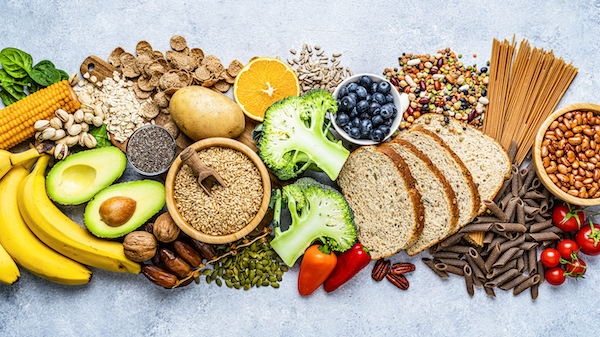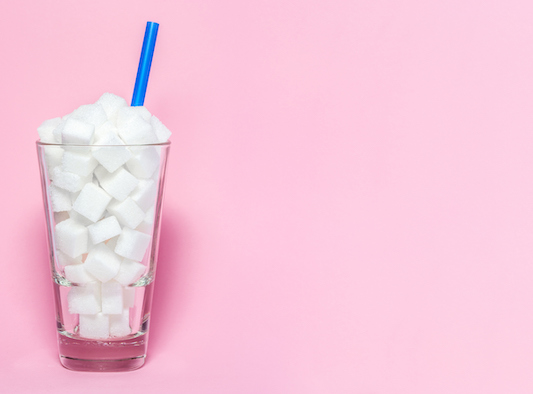By WHN Editors
In this article:
It’s great when, in old science fiction movies, the solution for vanquishing aliens or monsters turns out to be something simple, like sea water or sunlight. We get the same thrill when the latest medical discovery is actually a remarkably commonplace substance. This time, it’s tea.

Tea, known by botanists as Camellia sinensis, has been revered by many cultures for thousands of years — plenty of time to make note of its positive effects on health. But now there is evidence that drinking tea truly does help you live a longer — and better — life: emerging science and recent research show that tea (black, green, oolong, and other varieties — and the different ingredients each can contain), has distinct effects at the cellular level that enhance health and slow down the natural aging process.
Specifically, tea has the power to:
Top 10 health benefits of tea
- Stress recovery and relief from psychological distress
- Insulin regulation and weight maintenance
- Arthritis prevention
- Immune system support and cold/flu relief
- Reduction in risk of certain cancers
- Protection against Alzheimer’s and Parkinson’s diseases
- Reduced risk for cardiovascular disease
- Bone health promotion
- Prevention of lung damage
- Healthier aging
- Relieve certain health-related symptoms
- Reduce the risk of developing — and dying from — a long list of illnesses
- Prevent chronic diseases, as well as those related to lifestyle, by reducing inflammation
- Promote wellness and improved quality of life
You might ask, How could it be that something as simple — and affordable! — as tea has such potent health benefits? Well, in truth, the list of molecules in diverse varieties of tea is lengthy, and their chemical interactions with the body are quite complex. Researchers have pinpointed a number of individual constituents as responsible for tea’s wide-ranging health advantages, and now, a tremendous amount of new research is filling in the details.
It’s more than cozy comfort: tea warms you physically and emotionally
Drinking tea is comforting and relaxing, so a direct correlation between tea consumption and better health just adds new benefits to this cherished habit. The newest scientific inquiries are helping define the specific actions that tea has on our bodies and our longevity.
Doesn’t tea contain caffeine?
Yes. Tea’s caffeine content varies according to the variety and steeping time. It’s perfectly fine for most people to have a daily 8-10 ounce cup (or two) of tea or another caffeinated beverage — just don’t overdo it.
Black tea: 6 oz — 50 mg caffeine
Green tea: 6 oz — 30 mg caffeine
Coffee: 6 oz — 110–170 mg caffeine
Let’s start with the effects you can feel because in some ways, those are the most noticeable and immediate benefits. While we’ve learned from experience that a nice, hot “cuppa” can help calm and relax us, research shows that black tea actually promotes quicker recovery from stress events at a physiological level. Because this effect is measured by the speedier return to normal levels of stress hormones, it could also confer significant downstream benefits, such as reduction of adrenal imbalance and risk of heart disease.
If you drink several daily cups of green tea — a common practice all across Asia — you may have less psychological stress overall. And studies on older people show that green tea can also reduce the prevalence of depressive symptoms and even improve psychological well-being.
Health span effects you can measure — and weigh
As the prevalence of obesity and diabetes edges up and up, it’s a relief to know that good old tea can help with both conditions. While a study of instant tea showed it can help stabilize blood sugar, other research indicates another type of tea — oolong — helps control the blood sugar effect that carbohydrates have on people with type 2 diabetes.
Green tea contains some caffeine, like most teas, but it also contains phytochemicals with powerful antioxidant properties called catechins. Researchers think both these substances can help increase your ability to lose abdominal fat while exercising, and may even reduce triglyceride levels in people who don’t exercise at all!
Green tea is liver-friendly all the way around. It helps you metabolize fats, and may even stop the build-up of fatty deposits in the liver. But perhaps the most interesting, and youth-preserving, effect is how green tea can improve your body’s all-important ability to detoxify well.
The catechins found most abundantly in green tea — but also present in black, oolong, and white teas — ramp up levels of key protective enzymes. The protective effects of catechins need more exploration, but to date these enzymes have been found to help balance the two stages of liver detox (phase I and phase II), reduce toxic effects of reactive intermediate substances created during the detoxification process, and neutralize certain cancer-causing molecules.
A kettle-full of immune support
We all try to avoid catching seasonal illnesses, like colds and flu, but it still happens. When we’re achy or have a scratchy throat, we find a soothing cup of hot tea hits the spot. But now there is scientific proof that this benefit transcends the psychological. Green tea can actually reduce cold and flu symptoms and get you back on your feet faster. In fact, people who drink green tea just seem to get fewer colds overall.
Tea’s effects on arthritis
It used to be thought that arthritis was an inevitable fact of life for us as we grew older, but there is a lot more to the equation — including a strong inflammatory component.
Studies show tea consumption can protect against autoimmune arthritis, delay the onset of rheumatoid arthritis (RA), and reduce joint damage and inflammation in those who already do have it.
The tea plant contains ingredients that work individually to help you fight germs and bugs, like L-theanine, which is thought to activate the infection-fighting T-cells in your immune system. Theanine is found most abundantly in fine green teas that are shade-grown, but again, in all types of true tea.
Other tea ingredients have effects that are anti-inflammatory and antiviral — polyphenols or catechins such as epigallocatechin gallate or EGCG. In theory, the ability to suppress inflammation may translate into less autoimmune activity in cells exposed to EGCG, accounting for lower incidence of autoimmune diseases like dry mouth (xerostoma) and rheumatoid arthritis in green tea-loving populations.
When taken with antibiotics, green tea has been found to effectively supercharge them and help them knock out “superbugs” and bacterial strains previously resistant to treatment. White tea — the new kid on the block here in the West — can also protect against bacterial infections.
Tea can shrink your risk of chronic disease
Tea, breathing, and lung health
Green tea
- Helps limit lung damage caused by cigarette smoke
- Limits the mental impairment that may result from obstructive sleep apnea
Black tea
- Prevents oxidative damage (from free radicals), inflammation, and cell death associated with exposure to cigarette smoke
In Japan, where even the preparation of tea is an ancient and beloved ritual, green tea is a household staple. Several studies there focusing on its health effects offer some encouraging results: along with helping prevent cells from becoming cancerous, green tea may also help prevent recurrence of the disease in cancer patients. Emerging research around the globe points to the power green and black teas may have to prevent gastric cancer, as well as cancers of the blood, breast, ovaries, colon, mouth, and prostate.
Drinking tea regularly may help ease another common fear many of us have about aging: loss of cognitive function. Research shows that both black and green teas protect against Alzheimer’s disease (AD), and guard against the memory loss linked to the tangled plaques that are the telltale hallmarks of AD.
In the prevention and treatment of Parkinson’s disease (PD), a degenerative disorder of the central nervous system, black and green teas both have value. Black tea decreases your risk of getting PD in the first place — by a staggering 71% — while green tea is able to slow down the progression of this devastating disease.
Tea for the heart: more than an ounce of prevention
If you’ve followed recent health trends, you know that the greatest overall threat to women’s longevity is cardiovascular disease. We’ve learned a lot about how diet and lifestyle can contribute to this degenerative condition, and now we’re starting to pinpoint effective ways to help prevent it altogether. Handily tea fits right into a healthy lifestyle focused on avoiding cardiovascular disease.
For people who drink lots of green tea, like the Japanese and others, there is a measurable reduction in the risk of death from heart disease. The polyphenols in green tea have the ability to facilitate blood flow through the vessels, and this circulatory effect can actually reduce both incidence of cardiovascular disease, and the risk of dying from it.
Stronger bones means longer life
Natural bone health also enhances a woman’s health span as the years advance. Again, tea comes to the rescue with well-documented, bone-conserving benefits. For starters, drinking tea is linked to higher bone mineral density (BMD) as well as a reduction in hip fractures, and preservation of the hip structure in general. And tea helps protect against bone loss even after menopause.
We want women to understand that bone tissue is intended to naturally break down and build back up throughout your life. Green tea can perform double duties in this process because it helps stimulate mineralization to generate bone formation, while simultaneously inhibiting the formation of osteoclasts, the cells that remove bone tissue.
Can tea make you younger?
A large amount of recent, cutting-edge science has focused on the factors that influence our ability to grow old gracefully. Now, tea is not a “fountain of youth,” but it might make a difference in the rate at which you age. Several studies show that black tea, and especially green tea, can help protect your DNA’s telomeres. Telomeres cap the very ends of your chromosomes, protecting the genetic information they contain, and by preserving them from fraying, ingredients found in tea can, in essence, help you stay “younger” than your chronological years.
Additional studies show that tea can support healthy aging by promoting eye and oral health. Specifically, tea has been associated with the preservation of retinal function in the setting of glaucoma and ischemia, as well as protection against gum disease.
Invite tea into your lifestyle
The body of scientific evidence proving the health advantages of tea continues to blossom more each year. It’s been fun to watch this familiar, everyday drink — enjoyed for thousands of years and revered as an elixir of longevity — morph into the latest medical marvel. But it makes perfect sense! When we look at the cultures where tea drinking has been most embedded throughout human history, the distinct health benefits of tea are apparent.
So today, why not fill the kettle with fresh, cold water and bring it to a rolling boil. Choose a nice fragrant variety, either loose or in a teabag, and pour yourself a cup of steaming, soothing — and healthy — tea. Let it steep for awhile, then sit back and enjoy the moment, knowing that this preventive lifestyle habit might be one that helps keep you as young as you feel.
1 Suekoa, N., et al. 2001. A new function of green tea: Prevention of lifestyle-related diseases. Ann. NY Acad. Sci., 928, 274–280. URL (abstract): https://www.ncbi.nlm.nih.gov/pubmed/11795518 (accessed 11.11.2009).
“These data suggest that green tea has preventive effects on both chronic inflammatory diseases and lifestyle-related diseases (including cardiovascular disease and cancer), resulting in prolongation of life span.”
2 Steptoe, A., et al. 2007. The effects of tea on psychophysiological stress responsivity and post-stress recovery: A randomised double-blind trial. Psychopharmacology (Berl)., 190 (1), 81-89. URL (abstract): https://www.ncbi.nlm.nih.gov/pubmed/17013636 (accessed 11.09.2009).
See also:
Daniells, S. 2006. Black tea may speed up recovery from stress. URL: https://www.nutraingredients.com/Research/Black-tea-may-speed-up-recovery-from-stress (accessed 11.09.2009).
“…Although [tea] does not appear to reduce the actual levels of stress we experience, [it] does seem to have a greater effect in bringing stress hormone levels back to normal.”
—Lead researcher Professor Andrew Steptoe, University College, London
3 Hozawa, A., et al. 2009. Green tea consumption is associated with lower psychological distress in a general population: The Ohsaki Cohort 2006 Study. Am. J. Clin. Nutr., 90 (5), 1390–1396. URL (abstract): https://www.ncbi.nlm.nih.gov/pubmed/19793850 (accessed 11.09.2009).
4 Niu, K., et al. 2009. Green tea consumption is associated with [less] depressive symptoms in the elderly. Am. J. Clin. Nutr., 90 (6), 1615–1622. URL (abstract): https://www.ncbi.nlm.nih.gov/pubmed/19828710 (accessed 12.02.2009).
5 Hozawa, A., et al. 2009.
6 Bryans, J., et al. 2007. The effect of consuming instant black tea on postprandial plasma glucose and insulin concentrations in healthy humans. J. Am. Coll. Nutr., 26 (5), 471–477. URL (abstract): https://www.jacn.org/cgi/content/full/26/5/471 (accessed 11.09.2009).
7 Hosoda, K., et al. 2003. Antihyperglycaemic effect of oolong tea in type 2 diabetes. Diabetes Care, 26 (6), 1714–1718. URL: https://care.diabetesjournals.org/content/26/6/1714.full (accessed 11.10.2009).
8 Wolfram, S., et al. 2006. Anti-obesity effects of green tea: From bedside to bench. Mol. Nutr. Food Res., 51 (2), 176–187. URL (abstract): https://www.ncbi.nlm.nih.gov/pubmed/16470636 (accessed 11.10.2009).
9 Maki, K. 2009 Green tea catechin consumption enhances exercise-induced abdominal fat loss in overweight and obese adults. J. Nutr., 139 (2), 264–270. URL (abstract): https://www.ncbi.nlm.nih.gov/pubmed/19074207 (accessed 11.10.2009).
10 Ikeda, I. 2008. Multifunctional effects of green tea catechins on prevention of the metabolic syndrome. Asia Pac. J. Clin. Nutr., 17 (Suppl. 1), 273–274. URL (abstract): https://www.ncbi.nlm.nih.gov/pubmed/18296354 (accessed 11.11.2009).
11 Bruno, R., et al. 2008. Green tea extract protects leptin-deficient, spontaneously obese mice from hepatic steatosis and injury. J. Nutr., 138 (2), 323–331. URL: https://jn.nutrition.org/cgi/content/full/138/2/323 (accessed 11.10.2009).
12 Chow, H–H., et al. 2007. Modulation of human glutathione S–transferases by polyphenon E intervention. Cancer Epidemiol. Biomarkers Prev., 16 (8), 1662–1666. URL: https://cebp.aacrjournals.org/content/16/8/1662.long (accessed 12.02.2009).
See also:
Halliday, J. 2007. Green tea spurs detox chemical production. URL: https://www.beveragedaily.com/Industry-Markets/Green-tea-spurs-detox-chemical-production (accessed 12.02.2009).
13 Chow, H–H., et al. 2007.
Halliday, J. 2007.
14 Rowe, C., et al. 2007. Specific formulation of Camellia sinensis prevents cold and flu symptoms and enhances gd T cell function: A randomized, double-blind, placebo-controlled study. J. Am. Coll. Nutr., 26 (5), 445–452. URL: https://www.jacn.org/cgi/content/full/26/5/445 (accessed 11.10.2009).
15 Rowe, C., et al. 2007.
16 Wikipedia. 2009. Gyokuro. URL: https://en.wikipedia.org/wiki/Gyokuro (accessed 12.02.2009).
17 Seely, D., et al. 2005. The effects of green tea consumption on incidence of breast cancer and recurrence of breast cancer: A systematic review and meta-analysis. Integr. Cancer Ther., 4 (2), 144–155. URL (abstract): https://www.ncbi.nlm.nih.gov/pubmed/15911927 (accessed 11.11.2009).
18 Song, J., et al. 2005. Antiviral effect of catechins in green tea on influenza virus. Antiviral Res., 68 (2), 66–74. URL (abstract): https://www.ncbi.nlm.nih.gov/pubmed/16137775 (accessed 11.10.2009).
19 [No author listed.] 2006. Green tea could fight autoimmune disorders. URL: https://www.nutraingredients.com/Research/Green-tea-could-fight-autoimmune-disorders (accessed 11.10.2009).
Mikuls, T., et al. 2002. Coffee, tea, and caffeine consumption and risk of rheumatoid arthritis: Results from the Iowa Women’s Health Study. Arthr. Rheum., 46 (1), 83–91. URL: https://www3.interscience.wiley.com/cgi-bin/fulltext/89015541/HTMLSTART (accessed 11.10.2009).
20 Kassem, M., et al. 2008. Influence of green tea on the antimicrobial activity of some antibiotics against multiresistant clinical isolates. Presented at the Society for General Microbiology’s 162nd meeting, March 31, 2008, Edinburgh, Scotland.
[No author listed.] 2008. Green tea shows superbug-battling potential. URL: https://www.nutraingredients.com/Research/Green-tea-shows-superbug-battling-potential (accessed 11.10.2009).
21 American Society for Microbiology. 2004. White tea beats green tea in fighting germs. Science Daily. URL: https://www.sciencedaily.com/releases/2004/05/040526070934.htm (accessed 11.10.2009).
22 Fujiki, H. 1999. Two stages of cancer prevention with green tea. J. Cancer Res. Clin. Oncol., 125 (11), 589–597. URL (abstract): https://www.ncbi.nlm.nih.gov/pubmed/10541965 (accessed 11.11.2009).
23 Deandra, S., et al. 2009. Is temperature an effect modifier of the association between green tea intake and gastric cancer risk? Eur. J. Cancer Prev. [Epub ahead of print.] URL (abstract): https://www.ncbi.nlm.nih.gov/pubmed/19864955 (accessed 11.11.2009).
24 Naganuma, T., et al. 2009. Green tea consumption and hematologic malignancies in Japan. The Ohsaki Study. Am. J. Epidem., 170 (6), 730–738. URL: https://aje.oxfordjournals.org/cgi/content/abstract/170/6/730 (accessed 11.10.2009
25 Seely, D., et al. 2005. The effects of green tea consumption on incidence of breast cancer and recurrence of breast cancer: A systematic review and meta-analysis. Integr. Cancer Ther., 4 (2), 144–155. URL (abstract): https://www.ncbi.nlm.nih.gov/pubmed/15911927 (accessed 11.11.2009).
26 Song, YJ, et al. 2008. Coffee, tea, colas, and the risk of epithelial ovarian cancer. Cancer Epidemiol. Biomarkers Prev., 17 (3), 712–716. URL: https://cebp.aacrjournals.org/content/17/3/712.long (accessed 12.02.2009).
Steevens, J., et al. 2007. Tea and coffee drinking and ovarian cancer risk: Results from the Netherlands Cohort Study and a meta-analysis. Br. J. Cancer, 97 (9), 1291–1294. URL: https://www.nature.com/bjc/journal/v97/n9/full/6604008a.html (accessed 12.02.2009).
27 Larsen, C., et al. 2009. Tea catechins inhibit hepatocyte growth factor receptor (MET kinase) activity in human colon cancer cells: Kinetic and molecular docking studies. J. Med. Chem., 52 (21), 6543–6545. URL (abstract): https://www.ncbi.nlm.nih.gov/pubmed/19839593 (accessed 12.02.2009).
Park, I., et al. 2009. Green tea catechin controls apoptosis in colon cancer cells by attenuation of H2O2-stimulated COX-2 expression via the AMPK signaling pathway at low-dose H2O2. Ann. NY Acad. Sci., 1171, 538–544. URL (abstract): https://www.ncbi.nlm.nih.gov/pubmed/19723101 (accessed 12.02.2009).
Lu, J., et al. 2009. PCR differential display-based identification of regulator of G protein signaling 10 as the target gene in human colon cancer cells induced by black tea polyphenol theaflavin monogallate. Eur. J. Pharmacol., 601 (1-3), 66-72. URL (abstract): https://www.ncbi.nlm.nih.gov/pubmed/18992738 (accessed 12.02.2009).
Kumar, N., et al. 2007. Green tea polyphenols in the prevention of colon cancer. Front. Biosci., 12, 2309-2315. URL (abstract): https://www.ncbi.nlm.nih.gov/pubmed/17127241 (accessed 12.02.2009).
28 Shin, D. 2009. Oral cancer prevention advances with a translational trial of green tea. Cancer Prev. Res., 2 (11), 919-921. URL (abstract): https://www.ncbi.nlm.nih.gov/pubmed/19892661 (accessed 11.11.2009).
29 Shin, D. 2009.
30 Haque, A., et al. 2008. Green tea catechins prevent cognitive deficits caused by a-beta-1-40 in rats. J. Nutr. Biochem., 19 (9), 619–626. URL (abstract): https://www.ncbi.nlm.nih.gov/pubmed/18280729 (accessed 11.10.2009).
31 Tan, C., et al. 2007. Differential effects of black versus green tea on risk of Parkinson’s disease in the Singapore Chinese Health Study. Am. J. Epidem., 167 (5), 553-560. URL: https://aje.oxfordjournals.org/cgi/content/full/167/5/553 (accessed 11.10.2009).
32 Levites, Y., et al. 2003. Neuroprotection and neurorescue against Abeta toxicity and PKC-dependent release of nonamyloidogenic soluble precursor protein by green tea polyphenol (-)-epigallocatechin-3-gallate. FASEB, 17 (8), 952–954. URL: https://www.fasebj.org/cgi/reprint/02-0881fjev1 (accessed 11.10.2009).
33 Suzuki, E., et al. 2009. Green tea consumption and mortality among Japanese elderly people: The Prospective Shizuoka Elderly Cohort. Ann. Epidemiol, 19 (10), 732-739. URL: https://www.ncbi.nlm.nih.gov/pubmed/19628408 (accessed 11.10.2009).
34 Widlansky, M., et al. 2007. Acute EGCG supplementation reverses endothelial dysfunction in patients with coronary artery disease. J. Am. Coll. Nutr., 26 (2), 95-102. URL: https://www.jacn.org/cgi/content/full/26/2/95 (accessed 11.10.2009).
35 Chen, Z., et al. 2003. Habitual tea consumption and risk of osteoporosis: A prospective study in the women’s health initiative observational cohort. Am. J. Epidemiol., 158 (8), 772–781. URL (accessed 11.11.2009).
36 Widlansky, M., et al. 2007. Acute EGCG supplementation reverses endothelial dysfunction in patients with coronary artery disease. J. Am. Coll. Nutr., 26 (2), 95-102. URL: https://www.jacn.org/cgi/content/full/26/2/95 (accessed 11.10.2009).
37 Ko, C.H., et al. 2009. Effects of tea catechins, epigallocatechin, gallocatechin, and gallocatechin gallate, on bone metabolism. Am. J. Clin. Nutr., 57 (16), 7293–7297. URL (abstract): https://www.ncbi.nlm.nih.gov/pubmed/19653629 (accessed 11.11.2009).
38 Ko, C.H., et al. 2009.
Daniells, S. 2009. Green tea extracts linked to healthier bones: Study. URL: https://www.nutraingredients-usa.com/Research/Green-tea-extracts-linked-to-healthier-bones-Study (accessed 11.10.2009).
39 Zhang, B., et al. 2008. Orally administered epigallocatechin gallate attenuates retinal neuronal death in vivo and light-induced apoptosis in vitro. Brain Res., 1198, 141–152. URL (abstract): https://www.ncbi.nlm.nih.gov/pubmed/18255049 (accessed 12.02.2009).
Zhang, B., et al. 2007. Epigallocatechin gallate, an active ingredient from green tea, attenuates damaging influences to the retina caused by ischemia/reperfusion. Brain Res., 1159, 40–53. URL (abstract): https://www.ncbi.nlm.nih.gov/pubmed/17573045 (accessed 12.02.2009).
Zhang, B., et al. 2006. Oxidative-induced retinal degeneration is attenuated by epigallocatechin gallate. Brain Res., 1124 (1), 176-87. URL (abstract): https://www.ncbi.nlm.nih.gov/pubmed/17084820 (accessed 12.02.2009).
40 Kushiyama, M., et al. 2009. Relationship between intake of green tea and periodontal disease. J. Periodontol., 80 (3), 372-377. URL: https://www.joponline.org/doi/abs/10.1902/jop.2009.080510 (accessed 12.02.2009).
References regarding tea and arthritis
a Mikuls, T., et al. 2002. Coffee, tea, and caffeine consumption and risk of rheumatoid arthritis: Results from the Iowa Women’s Health Study. Arthr. Rheum., 46 (1), 83–91. URL: https://www3.interscience.wiley.com/cgi-bin/fulltext/89015541/HTMLSTART (accessed 11.10.2009).
b Daniells, S. 2007. EGCG from tea may prevent arthritis — study. URL: https://www.nutraingredients.com/Research/EGCG-from-tea-may-prevent-arthritis-study (accessed 11.10.2009).
References regarding tea and lung health
a Chan, K.H., et al. 2009. Chinese green tea ameliorates lung injury in cigarette smoke-exposed rats. Resp. Med., 103 (11), 1746–1754.URL (abstract): >https://www.ncbi.nlm.nih.gov/pubmed/19487113 (accessed 11.11.2009).
b Daniells, S. 2008. Green tea extracts show promise for sleep-disordered breathing. URL: https://www.nutraingredients.com/Research/Green-tea-extracts-show-promise-for-sleep-disordered-breathing (accessed 11.11.2009).
c Banerjee, S., et al. 2007. Black tea prevents cigarette smoke-induced apoptosis and lung damage. J. Inflamm., 4 (1), 3. URL: https://www.journal-inflammation.com/content/4/1/3 (accessed 11.11.2009).










